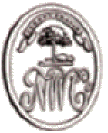I have a question, does anyone have a contact for some who makes clay pipes? The reason I ask is that I have an original clay pipe from Vicksburg that I am interested in reproducing. I have talked to several ceramics professors but they pretty much were no help. Does anyone have a source for a repro clay pipe maker who could handle this task?
Rick Musselman
Buckeye Mess
GHTI
Rick Musselman
Buckeye Mess
GHTI







Comment